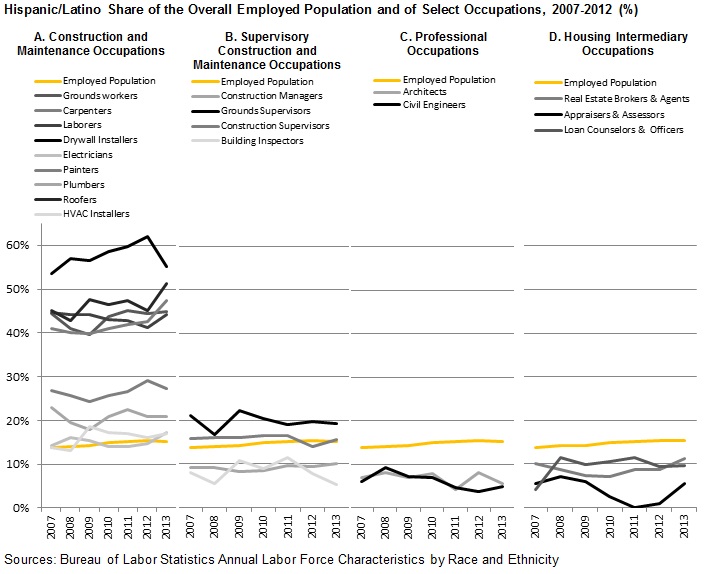
As the nation kicks off Hispanic Heritage Month, many of us involved in housing and community development research are reminded of the growing presence of Latino households in communities both large and small. In some regions, Latino communities are well established and have long exerted political, economic, and cultural strength. In others, like rural and suburban cities, nascent communities are being established.
 In all cases, the “relentless” demographics—as coined by political scientists Dr. Gary Segura and Dr. Matt Barreto—are reflected in our homebuying and homeowning. Even since the recent housing crisis, Latina- and Latino-headed households’ shares of the total homeowner population and of first-time homebuyers continue to rise.
In all cases, the “relentless” demographics—as coined by political scientists Dr. Gary Segura and Dr. Matt Barreto—are reflected in our homebuying and homeowning. Even since the recent housing crisis, Latina- and Latino-headed households’ shares of the total homeowner population and of first-time homebuyers continue to rise.
But, with Labor Day in our recent past, let’s focus on the changing demographic composition of the occupations that supply housing and housing services. This change in workforce patterns was predicted by former HUD Secretary (and current Urban Institute trustee) Henry Cisneros in his 2006 groundbreaking book with John Rosales, Casa y Comunidad: Latino Home and Neighborhood Design.
The Hispanic housing workforce
Compared with their 15.3 percent share of the current overall working population, Latinos occupy a disproportionately higher share of construction and building maintenance jobs. As a walk near any home construction sites can attest, the last three decades of homebuilding work in this country have been dominated by Latino workers. Last year, 55 percent of drywall workers were Hispanic. In some high-growth states, like Texas and California, the residential construction workforce is almost universally Latino and, often, immigrant. The wages, benefits, and safety precautions they receive vary.
Latino residential construction managers and supervisors are also growing in numbers, though the group remains underrepresented among technical professionals, like architects and engineers. Many of these trends can be attributed to differences in age, immigration status, and educational attainment of Hispanics/Latinos compared with other groups—characteristics that are also changing.
We are also seeing an interesting shift in other critical occupations, especially among the professional intermediaries that serve as the face of the industry to homebuyers and homeowners: residential realtors, brokers, appraisers, title agents, and lenders. Hispanics/Latinos continue to be underrepresented in these professions, yet their numbers have varied wildly during the housing boom, bust, and recovery.

What these changes means for homebuyers and the housing industry
The growth of Latino real estate and financial professionals is a critical evolution not just for the Latino population, but also for the housing industry. The literature on Hispanic homebuyers suggests that the ethnicity of industry professionals may play a role in influencing that population’s decisions through shared linguistic, cultural, and social practices.
In particular, residential real estate sales agents and brokers have a unique set of professional behaviors and interactions with clients that are likely very influenced by the racial, cultural, social, economic, and immigration status of both the home professional and home buyer. There is anecdotal evidence that Latino professionals contribute to the rates of Hispanic first-time homebuyers in positive (e.g., providing language-appropriate resources) and negative (such as peddling predatory loans) ways.
The advent of ethnic-based professional organizations like the National Association of Hispanic Real Estate Professionals is an indicator both of the professional emergence of Hispanics and of the reality that the professionals likely continue to face challenges in the sector.
So, as Hispanics make up an increasing share of the general US household-forming population, it is critical to look at the trends of Hispanics/Latinos working in the housing industry—that is, the supply side of the homebuilding, remodeling, design, realty, lending, and building maintenance sectors.
For both trajectories, there is more to come.
Let’s build a future where everyone, everywhere has the opportunity and power to thrive
Urban is more determined than ever to partner with changemakers to unlock opportunities that give people across the country a fair shot at reaching their fullest potential. Invest in Urban to power this type of work.